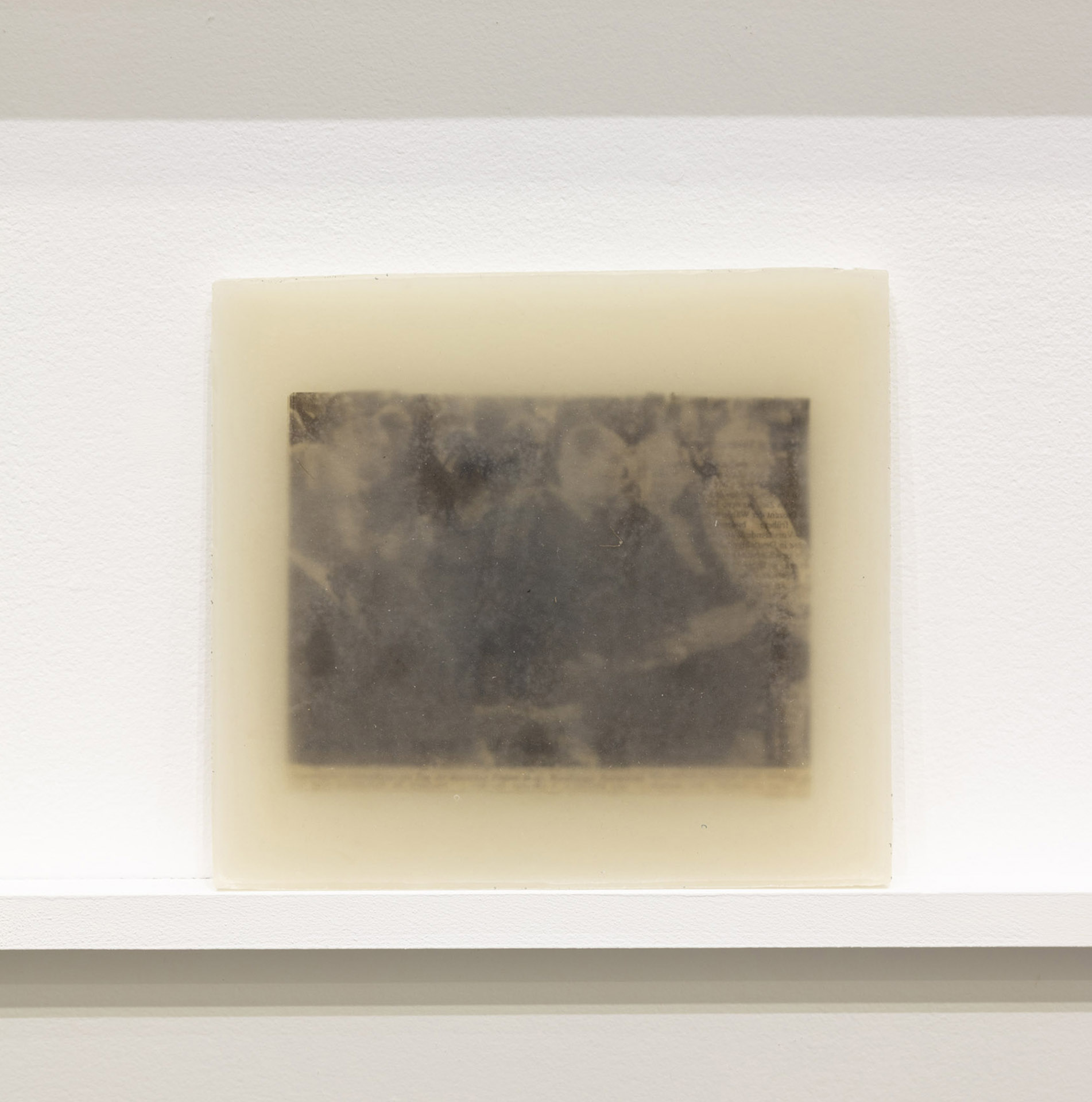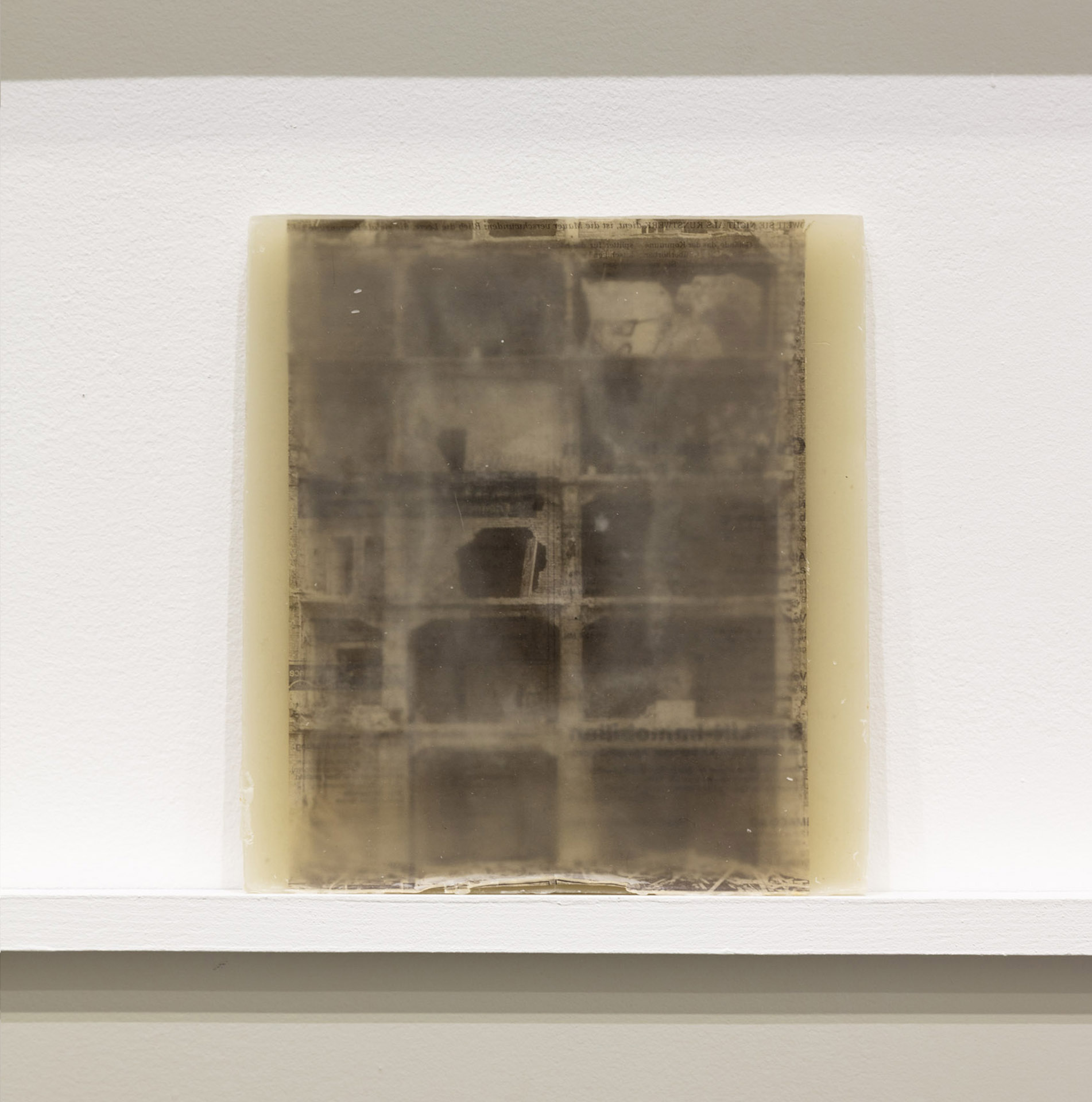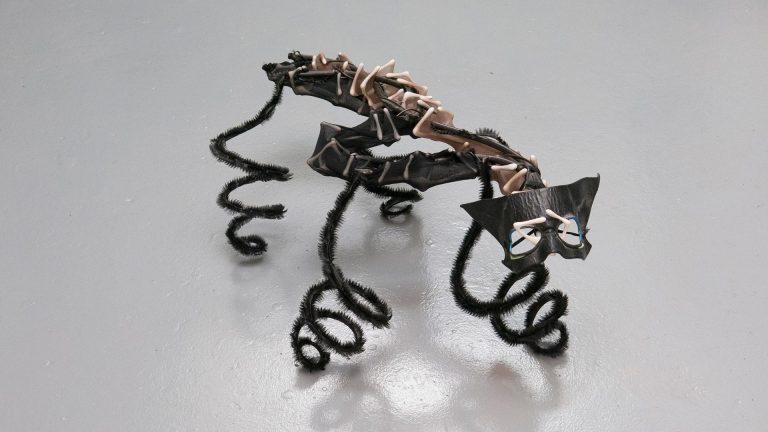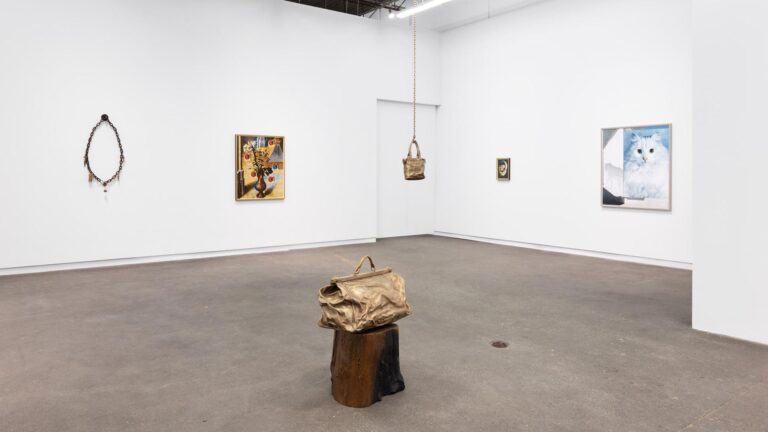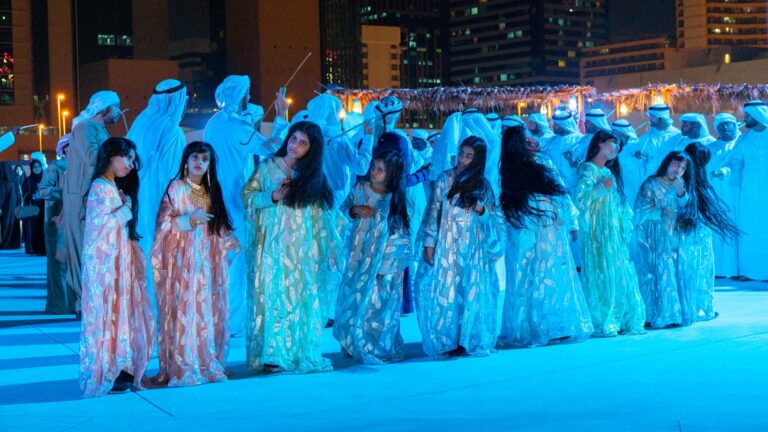Artist: Iris Häussler
Exhibition title: Archivio Milano 1991
Venue: Daniel Faria Gallery, Toronto, Canada
Date: April 10 – May 22, 2021
Photography: all images copyright and courtesy of the artist and Daniel Faria Gallery, Toronto
Daniel Faria Gallery is pleased to present Archivio Milano 1991, Iris Häussler’s fifth solo exhibition with the gallery.
For one week in 1991, as September turned to October, Iris Häussler could be found in Spazio Ansaldo, a former industrial building in Milano, Italy. Invited by Gianni Sassi for the festival Milano Poesia, Häussler would turn the space into a temporary open studio. Each day, she purchased newspapers from around the world: the Financial Times, la Repubblica, Neue Zürcher Zeitung, Süddeutsche Zeitung, the Guardian, L’Indépendant. She read the papers, cutting out reports of natural disasters, political strife, and local news items likely not important enough to be remembered. Equipped with wax from used votive candles, a melting pot, a hot plate, and twelve square casting forms, she cast the clippings into wax tablets, over and over again, until nearly 500 of them began to fill two large metal shelves. Stored in chronological order, the growing rows of tablets marked both the unfolding of time around the world, and the process-driven, temporal nature of the project itself.
Visitors watched as Häussler worked, and were invited to look at the accumulated tablets from days prior, pulling them like books from the metal shelves and holding them up to the light to try and read the events of yesterday, or yesterday’s yesterday, now shifting in and out of focus under a layer of wax. In this participatory process, the tablets were re-arranged until there was no longer a recognizable system of order. They were now organized by human interaction — past dates jumping ahead of later ones according to the whims of hands.
At the close of September and beginning of October in 1991, George Bush was president of the United States and Mikhail Gorbachev president of the Soviet Union. 1991 was the end of the forty-four-year Cold War. On September 19, 1991 Otzi the Iceman was discovered, and on September 28th, Miles Davis died. On September 30th a tornado tore through Itu, Brazil, killing 16 people and injuring 176. Thirty years later, we look at these clippings and our personal biographies intermingle with world events: birthdays and deaths coinciding with earthquakes and wars.
The manner in which Häussler’s Archivio is now displayed recalls Gerhard Richter’s Atlas and Aby Warburg’s Bilderatlas Mnemosyne. Both Richter and Warburg utilize a grid-like system in order to organize monumental amounts of visual information in a non-hierarchical manner. In Häussler’s archive, her use of material also has a levelling effect. Hovering in the wax slabs, news reports appear just as unstable as memories and just as remote as fiction, one no more consequential than the next. Häussler has worked with wax throughout her career, encasing items such as clothing, bed linens, or letters. In this process of conservation and concealment, the encased objects appear simultaneously near and far; the opacity of time palpable.
Iris Häussler studied at the Munich Academy of Fine Arts. Recent solo exhibitions include: Apartment 4 (2018/19) and Tale of Two (2018) at the John Michael Kohler Arts Center, Sheboygan; The Sophie La Rosière Project, a four-part exhibition at the Art Gallery of York University, Toronto (2016), Scrap Metal Gallery, Toronto (2016), Daniel Faria Gallery, Toronto (2017), and PSM Gallery, Berlin (2019); and He Named Her Amber at the Art Gallery of Ontario, Toronto (2008-10). Group exhibitions include: the Koffler Gallery, Toronto (2019); Oakville Galleries, Oakville (2019); Kunstverein Hamburg (2017); Museu de Arte de São Paulo, São Paulo; Villa Vassilieff, Paris (2016); and Minneapolis Institute of Arts, Minneapolis (2013). Her work was included in SITE Santa Fe, USA (2013) and the 18th Biennale of Sydney, Australia (2012), and can be found in the collections of the National Gallery of Canada (Ottawa), the Art Gallery of Ontario (Toronto), Städtische Sammlung in Lenbachhaus (Munich), Goetz Collection (Munich) and the Collection Opitz-Hoffman (Bonn).

















